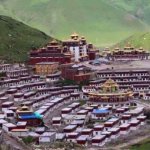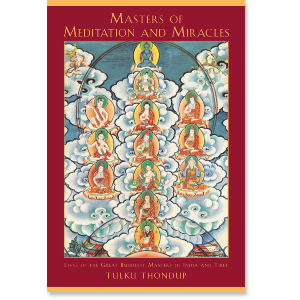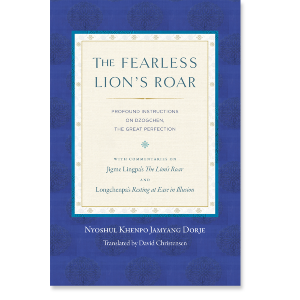| The following article is from the Spring, 1990 issue of the Snow Lion Newsletter and is for historical reference only. You can see this in context of the original newsletter here. |
It is of the greatest simplicity. It is what is. Dzogchen, which is beyond conceptions and transcends both grasping and letting go, is the essence of transcendental insight. This is the unchanging state of non-meditation in which there is awareness but no clinging.
Jikme Lingpa, The Lion's Roar
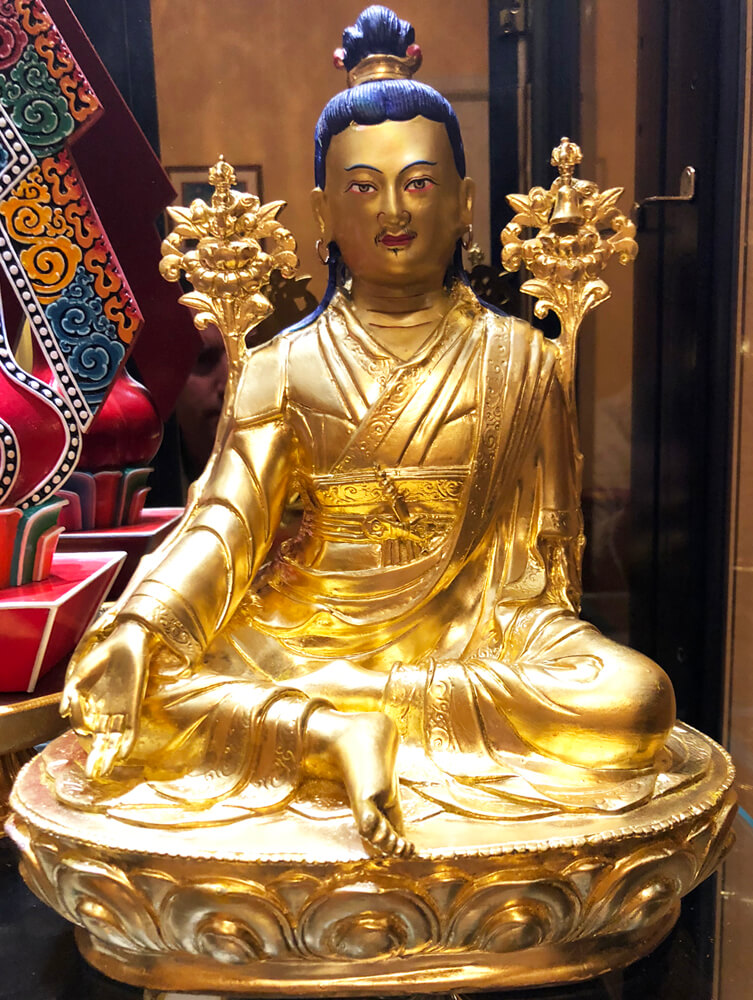
The first Dzogchen Rinpoche, Pema Rigdzin, was born in Kham Riwoche in Eastern Tibet in 1625. He overcame great difficulties in order to study with about thirty masters. He was ordained by the 5th Dalai Lama, thereby creating the close link between the Dalai Lamas and the Dzogchen Rinpoches which was to endure over the centuries to follow. Pema Rigdzin spent much of his life in retreats, which included one seven-year retreat on one seat and from one to three years in many other places, and he became renowned all over Tibet. Once when he was giving him an empowerment, his master Bakha Tulku, realizing the depth of his attainment, said: I have heard of Dzogpachenpo as a teaching, but I have never seen Dzogpachenpo as a person except in you. It was from then on that he became known as Dzogchen Pema Rigdzin, Dzogchen Rinpoche.
In the latter part of his life, he was summoned by the Dalai Lama, who told him that he believed he was, without any doubt, the reincarnation of Tsongkhapa, who had vowed to serve the Nyingma School in a future life. With that he instructed him to go and found a Nyingma monastery at Dzachukha in Kham. Dzogchen Rinpoche set out for Kham with his two greatest students, and when they came to the site of the future monastery, it was just an empty valley with a few nomads. To this day, the stone on which Dzogchen Rinpoche first rested still bears the imprint of his body. As he sat, undecided as to where to build the monastery, he put out a small protector's offering, whereupon a crow flew down, took the offering in its beak and threw it. The spot where it landed marked the site of the Dzogchen monastery.

Photo of Dzogchen Moansery in Tibet more recently from Wikimedia Commons
The fame of Dzogchen Rinpoche attracted students from all over Tibet, and with the help of the King of Derge, the monastery was completed over the years 1684-5. Dzogchen Pema Rigdzin passed away at 73, in 1697. The monastery he founded, called Dzogchen Rudam Orgyen Samten Choling, was destined to become the largest Nyingmapa monastery in Kham. It was situated in the Tudam Kyitram Valley, in Kham Derge on the border with Lingt-sang, the birthplace of the great Tibetan warrior-king Gesar. The site is counted as one of the twenty-five great pilgrimage sites of the Kham region, and the main one associated with the noble qualities of the Buddhas. Nearby lie three sacred lakes, and the cave where Padmasambhava first compounded myrobalan medicine.
It was in Mongolia that the Second Dzogchen Rinpoche Gyurme Tekchok Tenzin was born in 1699. He became a realized master of Dzogpachenpo and took a special interest in the Buddhist scriptures, copying the whole one hundred and eight volumes of the Kagyur (the Word of the Buddha) by hand. It was when the king of Derge found him alone copying the Kagyur that he was moved to establish a printing press at Derge to produce the Kagyur and Tengyur. The Second Dzogchen Rinpoche himself founded the printing press at Dzogchen, which later became one of the most well-known in Tibet. At the behest of the King of Derge, he published the writings of Longchenpa (1308-63), such as the Seven Treasuries, the Trilogy of Finding Comfort and Ease, and his great commentary on Guhyagarbha Tantra.
Dzogchen was now almost like a city in size, and famous for the Shedra and retreat centers that produced and attracted countless renowned scholars and masters of meditation. Among them was the great Patrul Rinpoche, who rose to fame as a scholar and Dzogchen master, poet and author, and played a leading part in the 19th-century renaissance of Buddhist culture and spiritual life in Tibet. His free spirit led him away from a monastic lifestyle, and he preferred to stay in retreat, travel or live amongst beggars. Scholars from all four schools of Tibetan Buddhism and Bon came to study with him.
Mipham studied at Dzogchen Shedra too, especially under Patrul Rinpoche. Famous for his original commentaries on important Buddhist scriptures, which were used as textbooks in colleges all over Tibet, he also wrote on many subjects. His printed works alone came to over thirty-two volumes.
Jigdral Changchub Dorje, the Sixth Dzogchen Rinpoche, was born in Tsari in 1935. Under the tutorship of Khenpo Gonri, he was already a master in whom many saintly qualities were seen, such as being able to foretell the unseen and leave imprints of his hands and feet in solid rock. He received teachings from a number of masters, including Jamyang Khyentse Chokyi Lodro, and was granted the title of Qutuktu by the Government of Tibet, the highest spiritual honor. He devoted all his resources and energy to furthering the Buddhadharma, encouraging the study of specific teachings, continuous ceremonies and cycles of practice in the study and retreat centers. Among a number of important images he constructed at Dzogchen was a three-dimensional Copper Coloured Mountain (Padmasambhava's paradise) made of various precious gems.
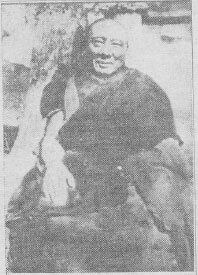
During his time, the lamas and monks at Dzogchen monastery numbered over a thousand, and it had over two hundred and fifteen branch monasteries. Dzogchen monastery had perhaps the best scriptural college and retreat center in the Nyingma and Dzogchen tradition. It was also famous for its sacred dances, to which people would flock from far and wide.
In 1959 Dzogchen monastery was razed to the ground by an occupying Chinese force, and Dzogchen Rinpoche, along with the majority of the lamas and monks, was killed. Barely half a dozen of the monks from Dzogchen managed to escape into exile.
The Seventh Dzogchen Rinpoche, Jikme Losel Wangpo, was born in Sikkim in 1964. He was recognized by the 4th Dodrupchen Rinpoche and enthroned in 1972. Among the other great Lamas from whom he has received teachings are H.H. Dudjom Rinpoche and Dilgo Khyentse Rinpoche, and his education has been very closely and personally supervised by His Holiness the Dalai Lama, who feels very strongly that link between himself and Dzogchen Rinpoche created during the time of the Fifth Dalai Lama. The present Dzogchen Rinpoche has long been regarded in India as being a great teacher of the future, showing remarkable qualities-profound intelligence and inner awareness along with quiet dignity and humility. In 1985 and in 1988, at the invitation of Sogyal Rinpoche and Rigpa Buddhist Meditation Centers, he made his first visits to the West.
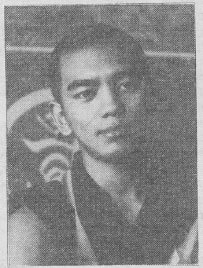
According to the directions of H.H. the Dalai Lama, the Dzogchen Monastery is being rebuilt in Kollegal, Mysore, South India, were it will become a major center for the Nyingmapa teachings. His Holiness considers this of very great importance, granting the site for the monastery close to his own residence. Already monks have enrolled and the monastery serves as a focus for the large Tibetan community, catering to its spiritual and educational needs.
Dzogchen monastery will become a major focal point for the Nyingmapa teachings, and will reestablish the great living tradition of Dzogchen, where both study and practice are equally emphasized. The most important phase of the development of the monastery is to establish a study college (Shedra) modeled on the famous Shri Singh Shedra' of the original Dzogchen monastery. Provision of teachers and facilities for study are of crucial importance for the young monks who have joined the monastery. Four salaried teachers provide a well-rounded education and instruct the monks in the traditional branches of learning. At present all the monks receive lessons in the one room of the kitchen/dining hall, which having only just been constructed, lacks any fittings or installations. As long as the hall is used for classes, it cannot be used for its original purpose.
The total construction of the Shedra, including building materials, is just over 100,000 rupees (approximately $58,600).
Water Tank Dzogchen monastery is located in a particularly dry area of southern India, where scarcity of water is a major problem. At the moment an old pipe supplies a very limited amount of water from the nearby hills, but it is not even sufficient for washing. Building construction requires a great deal of water and currently this can only be arranged with enormous difficulty. New toilets and bathrooms have been completed but owing to the water shortage these facilities cannot be used. The monastery badly needs an adequate water supply which can be provided through the installation of a water tank. The cost of the water tank is 15,000 rupees or $900.
Sponsorship Individual sponsorship for the fifty resident monks is required to ensure their continued training. For $20 a month a monk can be fully supported in his training and education. For full details on the sponsorship program and other projects contact Rigpa Fellowship, P.O. Box 7866, Berkeley, CA 94707. Tel.408-688-2535.

